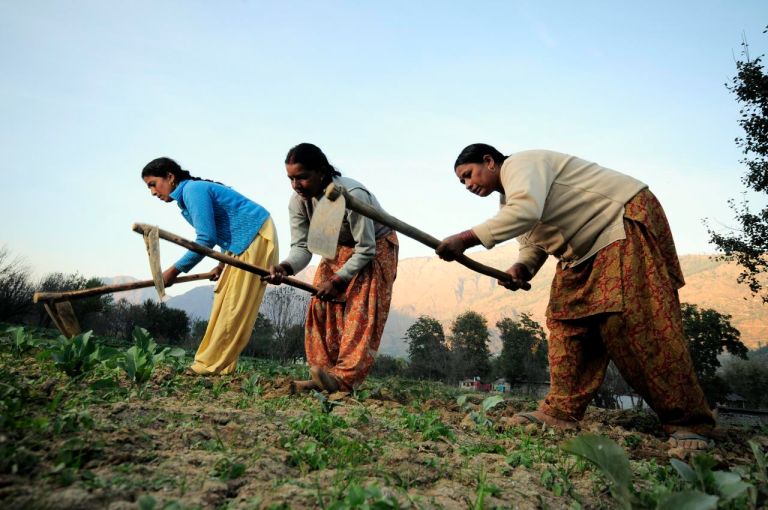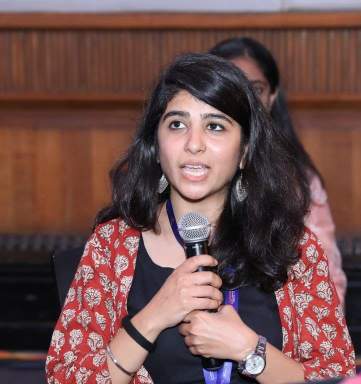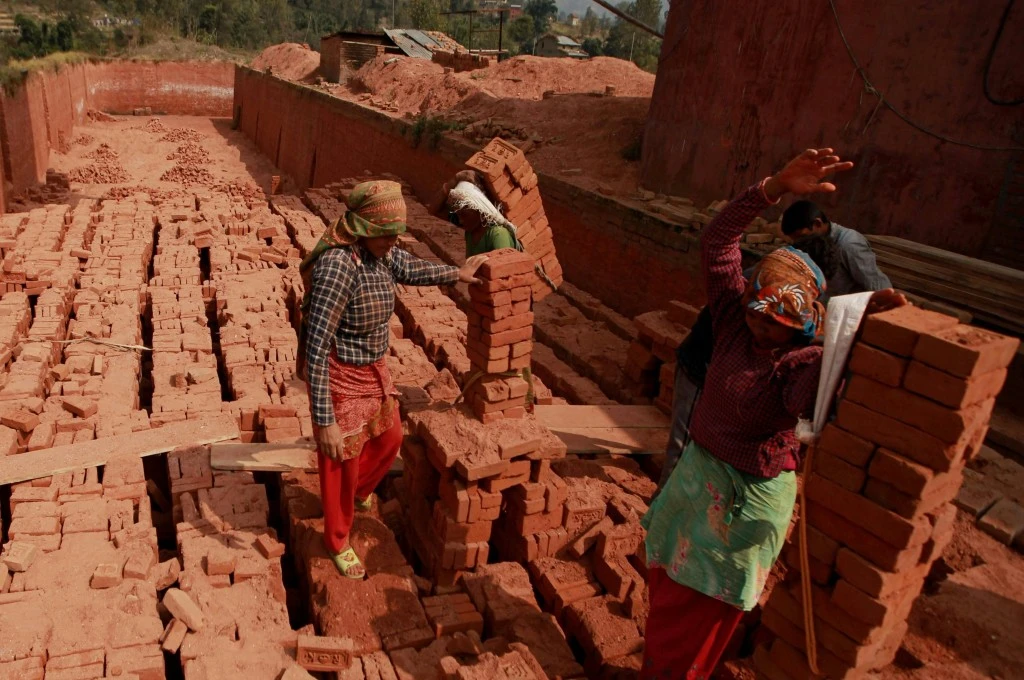According to the Food and Agriculture Organisation (FAO) of the United Nations, women produce approximately 60-70 percent of the food in most developing countries and are responsible for almost 50 percent of all global food production. In India, 48 percent of all self-employed farmers are women. In Sri Lanka and Bhutan respectively, 41.5 percent and 62 percent of women work in agriculture. And in Sub-Saharan Africa, 50 percent of the total agricultural workforce is made up of women farmers.
Despite these figures, the work of women in agriculture is often unaccounted for, rendered marginal, or invisibilised. In addition, women farmers are paid significantly lower than their male counterparts—estimates suggest that, as of 2016–2017, there was close to a 22 percent wage difference. Furthermore, the role of women farmers is often limited to less skilled work such as sowing, weeding, and harvesting. They are seldom included in decision-making processes and are not often seen participating in work that is mechanised.
In India, women own only 10 percent of agricultural land, while in Africa the figure is 20 percent.
Many of these gender disparities in smallholder agriculture are an outcome of systemic challenges. For instance, land ownership and other entitlements have been a major cause of concern for women farmers—in India, women own only 10 percent of agricultural land, while in Africa the figure is 20 percent. Additionally, many of the policies targeting the agricultural sector fail to recognise women as ‘farmers’ which consequently restricts their access to institutional credit. Lastly, existing social and cultural norms often exclude women from participating in market-facing roles, key decision-making processes, trainings, and extension work.
While these disparities continue to remain high, there is a growing consensus globally, on the role of agricultural technologies in ensuring food security and reducing farm-level drudgery. Most agricultural technologies have proven that they can support in a) increasing productivity, b) reducing the cost of cultivation, c) increasing sales realisation, and d) reducing vulnerabilities while also restricting the carbon footprint of agriculture. However, for these technologies to contribute their full potential to global food security, service providers need to be more inclusive when it comes to women customers.
Our interactions with farmers from across regions in Asia demonstrates that the adoption of such technologies is dismally low amongst women. This low adoption, amongst women, has the potential to further fuel gender disparities in agriculture in the long-run. Given this background, here are five principles that technology service providers could integrate in design, development, and deployment phases to make their solutions more inclusive for women.
1. Include women at the design stage
A bottom-up approach to designing agricultural technologies is critical. Technology service providers should use approaches such as design-thinking (a user-centric approach to define challenges, ideate on solutions, and develop and deploy pilots and tests) in their ideation phase. They should also make sure that women form an adequate part of any immersion visit or workshop that is conducted to identify challenges that farmers face. This would ensure that potential solutions consider the specific problem statements that women may face and also the requirements of women for the technology to be adoptable by them.

2. Include sex-disaggregated data as a key decision variable in customer segmentation exercises
Customer segmentation exercises are key to increasing adoption of agricultural technologies as it allows for designing and developing distinct strategies for different customer groups. Since women farmers differ from their male counterparts in factors such as literacy rates, control and access of resources, and norms followed, customer segmentation exercises should integrate data about them as a key decision variable.
For instance, existing societal and cultural norms may prevent women from participating in group meetings owing to factors such as timing of the meeting, location, or presence of male counterparts. Keeping these factors in mind would allow service providers to design data collection exercises that are inclusive, and result in getting actionable insights from women farmers or cultivators.
Similarly, owing to factors such as lower literacy rates amongst women farmers, service providers are required to introduce adequate technological interventions to address such unique adoption challenges. Thus, by understanding the requirements of women as a specific segment, service providers could integrate video, audio, and imagery, instead of (only) written text to ensure that women adopt and use their solutions. In addition, during prototyping and piloting, technology service providers should collect sex-disaggregated data for fine-tuning their products more efficiently.
3. Ensure representation of women in field and sales teams
The sustained use of agricultural technologies at a grassroots level requires significant capacity building exercises and on-site training. Our field research across South Asia has demonstrated that these capacity building exercises are often conducted by field staff with limited women representation. This directly impacts the participation of women farmers (who might not be comfortable spending a large amount of time with men), which in turn further limits adoption. Similarly, technology service providers should ensure that their sales team has women onboard, as they would be able to have sustained conversations about their solution(s) with women farmers or cultivators.
4. Involve local influencers
Designing pilots and deployment strategies that leverage women champions from the village (such as existing women farmer leaders) can facilitate the development of more robust products while also having a strong demonstration effect. By doing so, technology service providers are firstly able to validate whether their product is usable by women and identify any roadblocks to usage. Secondly, this process tends to encourage women farmers to adopt technologies as an outcome of seeing women champions use the same technologies.
In addition, to increase awareness and outreach of technologies, leveraging local influencers such as representatives of existing women-focused philanthropic interventions and panchayat leaders can be extremely useful for technology service providers seeking to enter new markets.
5. Consider access and control over resources
Access and control over resources play a crucial role in determining the adoption of any technology. For instance, women farmers are often seen to have limited or no access to smartphones which may lead to reduced adoption of digital technologies. In such cases, service providers can attempt to reach them through the younger generation in households. Similarly, women may have a restricted ability to pay for technologies, to overcome which, technology service providers could consider alternate revenue models to sustain their operations such as providing data-driven forward and backward linkages for a small commission fee.
Women reinvest up to 90 percent of their earnings back into their households.
Women reinvest up to 90 percent of their earnings back into their households most of which is spent on nutrition, food, health care, school, and income-generating activities that help in breaking the cycle of intergenerational poverty. According to a report by FAO, if women in rural areas have access to land, technology, and financial services, among others, farm yield could increase by 20-30 percent, thus contributing significantly to food security.
To conclude, it’s important to acknowledge that increasing technology adoption amongst women farmers could result in increased economic benefits at the grassroots as well as significant social impact. At the same time, by developing solutions that are more inclusive, technology service providers could tap into a much larger market, consequently improving their own business performance.
The article has been made possible by insights from Kunal Prasad (Co-Founder and COO CropIn Technologies), Soma Kishore Parthasarathy (National Facilitation Team MAKAAM and Policy Advisor to the Government of India), and Carolyne Kirabo (Investment Consultant and Gender Equality Champion).
—
Know more
- Learn about women-led gender lens investing as a tool to empower women.
- Learn more about the role of women in agriculture.
- Understand the best practices for taking technologies to smallholder farms.
Do more
- Undertake a course on developing gender-sensitive value chains.
- Integrate a human-centric approach to your products and services.






